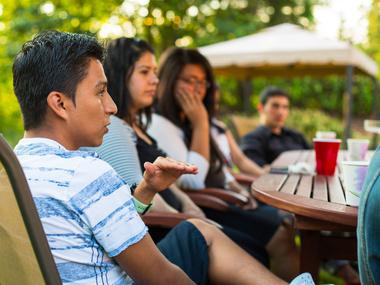
Jesus tells His followers they “are not of the world,”[1] meaning they have a solemn obligation to be a light to an immoral culture. This New Testament scripture is the root of the common saying that Christians should be “in the world, but not of the world.”
While it’s true we live in a world of moral ambivalence and shifting values, how often do we think about who “the world” really is? Because “the world” is a general, faceless term, we can forget it also represents specific people with real faces, tender hearts and sincere desires.
In a talk June 14, 2016, at Brigham Young University-Idaho, Elder Von G. Keetch of the Seventy taught students how to most effectively engage people whose views differ from theirs. He said mutual understanding is much more likely to come (though certainly not guaranteed) when we speak one-on-one and, if possible, face to face.
“If we allow ourselves to be limited to 140 characters, we will often be misunderstood,” Elder Keetch said. “Usually, much more can be accomplished one-on-one, face-to-face, as individuals come to understand each other."
Writing on a similar topic in the summer 2016 edition of Christianity Today, executive editor Andy Crouch says Christians "are called to real people in a real place. With those real people, we reflect on the concrete possibilities and limitations of the time and place we share. … Our mission is not primarily to 'engage the culture' but to 'love our neighbor.' Our neighbor is not an abstract collective noun, but a real person in a real place. By God’s grace, the cultural creativity required to fully love that neighbor may end up having lasting influence."
Indeed, it was often in one-on-one settings that Jesus spoke with enemies and social outcasts. He listened to their questions and asked some of his own. His words and actions brought healing to those with faith.
For Christians, the man who says He is “the way, the truth and the life”[2] is the ultimate model for achieving mutual understanding in our modern world.
Visit the Mormon Newsroom commentaries below, all published in 2016, for more information on the topics of diversity and dialogue:
The Virtuous Cycle of Dialogue
Civil Society Series, Part 1: The Art of Human Connection
Civil Society Series, Part 2: Engaging the Differences among Us
Civil Society Series, Part 3: Faith in the Public Square